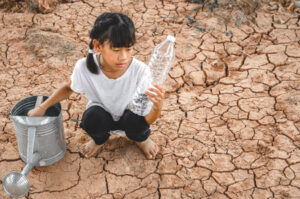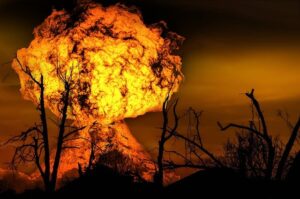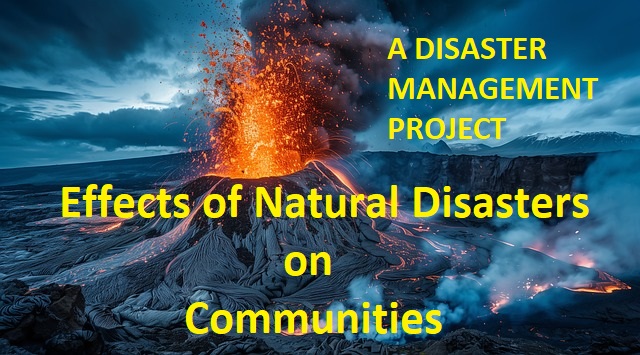Effects of Natural Disasters on Communities
Natural disasters may be fatal as well as create economic, social, and emotional hardship for communities and people alike. Shock and dread are common emotions (for friends and family safety or that a similar event would occur again). There are also a lot of other feelings including helplessness, wrath, and despair. Some of the victims may even feel ashamed of themselves. They believe they show how vulnerable, emotional, and dependent they are on other people. Many feel bad about not reacting the way they would have liked to.
The wildlife and the people who depend on them for friendship and financial stability suffer greatly when pets and animals perish in natural catastrophes.
Introduction
Natural disasters are catastrophic events that can have impacts on communities around the world. From drought, earthquakes tsunamis to hurricanes and wildfires, these occurrences can cause widespread destruction and loss of life. In this blog post, we will explore the effects of natural disasters on communities, including the social, economic, and environmental consequences.
11 Points You Must Include In Your Disaster Management Project On Climate Change
Definition of Natural Disasters
Natural disasters refer to sudden and severe events caused by natural forces, such as geological processes, weather patterns, or climate-related occurrences. These events can result in significant damage to infrastructure, loss of human life, and disruption of societal functions.
Historical Background
Throughout history, natural disasters have shaped the course of human civilization. From the eruption of Mount Vesuvius in ancient times to the more recent Hurricane Katrina, communities have faced the wrath of nature’s fury with varying degrees of preparedness and resilience.

Impact on Human Lives
The most tragic aspect of natural disasters is the toll they take on human lives. Families are torn apart, communities left in mourning, and survivors often grappling with trauma and loss. The emotional and psychological effects of such events can be long-lasting and challenging to overcome.
Social Impact of Natural Disasters
Psychological Effects on Individuals
Natural disasters can have profound psychological effects on individuals, leading to conditions such as post-traumatic stress disorder (PTSD), anxiety, and depression. The stress of surviving such events can take a heavy toll on mental health and well-being.
Displacement and Homelessness
One of the immediate consequences of natural disasters is the displacement of individuals and families from their homes. Whether due to flooding, landslides, or wildfires, many people find themselves suddenly homeless, in need of shelter and support.
15 Quick Tips On Russia Ukraine Conflict 2022 – A Complete Project Guide For School Students
Community Resilience and Support Systems
Despite the challenges posed by natural disasters, many communities demonstrate remarkable resilience in the face of adversity. In times of crisis, neighbors come together to help one another, emergency response teams mobilize to provide aid, and support systems are established to assist those in need.
Economic Consequences of Natural Disasters
Infrastructure Damage
The destruction of infrastructure, including roads, bridges, buildings, and utilities, is a common outcome of natural disasters. The cost of rebuilding and repairing these vital systems can be exorbitant, straining local economies and government resources.
Loss of Livelihoods
Businesses and livelihoods are often lost in the aftermath of natural disasters, leaving individuals without income or job opportunities. The economic impact of these events can be felt for years, as communities struggle to recover and rebuild.
Long-Term Economic Recovery Efforts
Rebuilding after a natural disaster is a long and costly process. Communities must work together to secure funding, resources, and support to repair infrastructure, restore businesses, and revitalize the local economy.
Environmental Impact of Natural Disasters
Destruction of Ecosystems
Natural disasters can have devastating effects on ecosystems, destroying habitats, endangering species, and disrupting delicate ecological balances. The loss of biodiversity and environmental damage caused by these events can have far-reaching implications.
Pollution and Contamination
Following a natural disaster, pollution and contamination are common concerns. Oil spills, chemical leaks, and hazardous waste can pose serious health risks to communities, wildlife, and the environment, necessitating cleanup and mitigation efforts.
Climate Change Implications
The frequency and intensity of natural disasters are often linked to climate change. Rising global temperatures, sea levels, and extreme weather events are all contributing factors to the increased risk of disasters, highlighting the importance of addressing climate issues.
Policy and Preparedness Measures
Government Response and Disaster Management
Governments play a crucial role in disaster response and management, coordinating relief efforts, providing funding and resources, and establishing emergency protocols. Strong leadership and effective communication are key to ensuring a swift and effective response to crises.
Importance of Early Warning Systems
Early warning systems are essential tools for predicting and preparing for natural disasters. From tsunami warnings to weather alerts, these systems can save lives by giving communities advance notice to evacuate, seek shelter, and take precautions.
Early warning systems allow people, communities, and organisations to take the necessary precautions to lessen the potential effect of catastrophes by giving them advance knowledge of possible risks. Planning and preparation tasks can also benefit from the usage of early warning systems.
Community Preparedness and Mitigation Strategies
Community involvement in disaster preparedness is vital for resilience and recovery. Establishing emergency plans, conducting drills, and educating residents on safety measures can help mitigate risks and improve response efforts in times of crisis. Mitigation includes such activities as:
- meeting or surpassing NFIP floodplain management guidelines.
- Enforcing wind-bracing regulations, seismic design standards, flood-proofing measures, and strict building norms for new construction and building repairs.
- Enacting zoning laws that direct growth away from places vulnerable to storm surges, floods, or erosion along the shore.
- Purchasing damaged residences or commercial buildings in flood-prone locations, moving the buildings, and repurposing the land as wetlands, open space, or recreational area.
- Constructing tornado-safe rooms and communal shelters to aid in the protection of residents in homes, public spaces, and educational institutions in hurricane- and tornado-prone locations.
Effects of Natural Disasters on Communities

Effects of Natural Disasters on Communities
Conclusion
Natural disasters have profound effects on communities, leaving lasting impacts on human lives, economies, environments, and policies. By understanding and addressing these consequences, we can work towards building more resilient and prepared societies for the future.
Recap of Main Points
- Natural disasters pose significant threats to communities worldwide, with social, economic, environmental, and policy implications.
- Individuals can contribute to disaster relief efforts through support, donations, and preparedness initiatives.
- Climate change plays a critical role in the increasing frequency and intensity of natural disasters, highlighting the need for mitigation and adaptation strategies.
Call to Action for Disaster Preparedness
As we face a future of increasing uncertainties and risks, it is crucial for individuals, communities, and governments to prioritize disaster preparedness and resilience. By working together and taking proactive steps to mitigate risks, we can better protect ourselves and our communities from the impacts of natural disasters.
FAQs
- How can individuals contribute to disaster relief efforts?
i. Give out food or other goods. To learn out what they need, contact the Red Cross chapter in your area, a community centre (such as the YMCA), or your house of worship.
2. Give of your time.
3. Offer to assist in distributing supplies to disaster-affected households or sorting through contributions.
Plan a fundraising event.
- What are the different types of natural disasters?
The Prime Minister’s National Relief Fund (PMNRF) welcomes philanthropic donations from individuals, institutions, corporations, trusts, and other groups. Section 80(G) of the Income Tax Act exempts any payments made to the PMNRF.
- What role does climate change play in the frequency and intensity of natural disasters?
The hydrological cycle is being impacted by climate change, which is also making storms more frequent and intense. More than 90% of “natural” disasters include a weather or water component, such as wildfires, flooding, pollution, and drought and aridification.
Remember, disaster preparedness starts with each one of us. Let’s join hands to create a safer and more resilient world for ourselves and future generations.
Stay Safe.





0 Comments